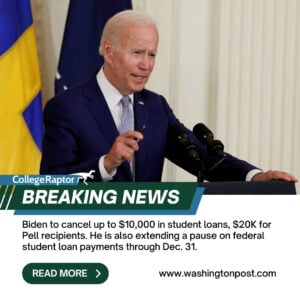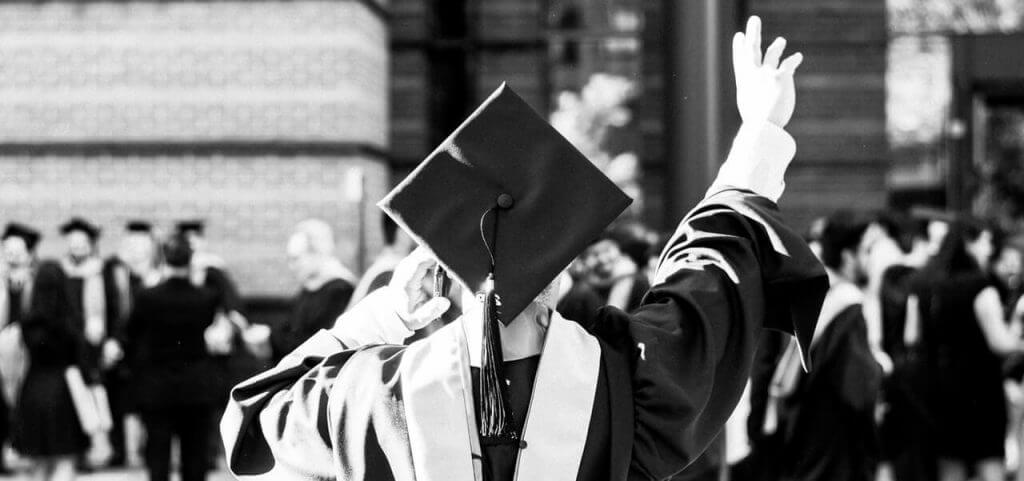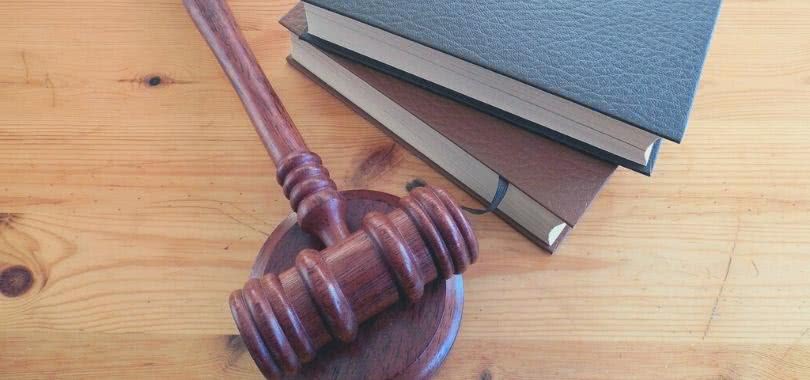
On June 30th, 2023, the United States Supreme Court released its decision regarding the Biden Administration’s plan for student loan debt relief.
Under the original plan, those with student loan debt would be able to cancel up to $20,000 of the amount. It used the HEROES Act of 2003 which gives permission for the education secretary to waive or modify student loan balances in the event of emergencies.
However, the Supreme Court disagreed. With a 6-3 decision, it was ruled that the Biden Administration did not have the authority to “rewrite the statute to the extent of canceling $430 billion of student loan principal.”
That leaves plenty of current and former students wondering, “What’s next?”
Repayments Will Resume in October
At the moment, student loan repayment plans will require payments again in October, with loans beginning to collect interest again on September 1st.
For students who are in default on their student loans, there will be protections from involuntary collections on their accounts. These individuals can take advantage of flexible repayment plans, but the program is opt-in only; borrowers will not be auto-enrolled.
There will also be a 12-month period where borrowers will not be reported to credit agencies for missing payments as repayment begins.
There Could Be Relief In the Future
The Biden Administration announced they had plans to help borrowers with student loan debt the very same day the Supreme Court released its decision.
At the moment, the new plan is to cancel the debt with the Higher Education Act of 1965 which states that the United States Education Department is able to “enforce, pay, compromise, waive, or release any right, title, claim, lien, or demand” in relation to federal student loan debt. This route will require negotiations, something the HEROES Act would not have needed.
However, it is not clear who will be able to participate in the new program or what its policies will be until negotiations are complete.
While it remains to be seen what exactly will come out of the new student loan debt program and if it will succeed, students can hold out some hope that they will receive some relief. Check back in with us as we update this page with new developments.
—————————————————————————————————————–

SEPTEMBER 2, 2022
Recently, the Biden administration in the United States announced a plan that would provide those with student loans some relief. In Biden’s student loan forgiveness plan, eligible individuals will be able to receive up to $20,000 in debt forgiveness. The announcement also included details on the student loan repayment pause, planned improvements to the Public Service Loan Forgiveness program, and more. In this article, we’ll cover the basics of what you need to know about student loans, Pell Grants, and the plan for debt forgiveness, as well as answer some of the more common questions we’re seeing at the moment.
What are Student Loans?
Student loans refer to either federal or private loans that are dedicated to helping an individual afford higher education. Federal loans include direct subsidized loans, direct unsubsidized loans, PLUS loans, and more. Private loans from banks, credit unions, and other financial institutions can also be used to finance education.
What are Pell Grants?
Pell Grants, are not a loan, but a grant, which means it does not have to be repaid. These are for undergraduates who have demonstrated extreme financial need. Whether or not you received a Pell Grant will impact how much of your student loan debt will be forgiven.
What Steps Are Being Taken to Help Individuals with Student Loan Debt?
There’s no question – the cost of higher education has risen dramatically. Since 1980, for example, the cost has nearly tripled. That’s accounting for inflation, too! The Biden Administration acknowledges that Pell Grants are not keeping up and students, on average have about $25,000 in student loan debt. This financial burden means graduates are simply not able to afford homes, cars, and everything else while they’re under the weight of crushing student loan bills and the interest that comes along with them. As a result, the Department of Education will be forgiving up to $20,000 in student loan debt for eligible individuals.
In addition to this debt cancellation, there are other steps that will be taken:
- The pause on repayment of student loans will be extended until December 31st, 2022.
- Undergraduate loan monthly payments will be cut in half.
- Improvements will be made to the Public Service Loan Forgiveness (PSLF) program.
The Biden Administration is also planning to fight for free community college, reasonable college prices, and an increase to Pell Grant amounts.
FAQ: Biden’s Student Loan Forgiveness Plan
Not all of the details of President Biden’s student loan forgiveness plan are available just yet regarding the plan for student loan debt forgiveness, but here are some of the most commonly asked questions at the moment.
What do I need to do to extend my Student loan Pause?
Nothing. The pause occurs automatically. Payments will resume in January of 2023 so budget and plan ahead for that.
Who Qualifies for Loan Forgiveness?
Individuals who make less than $125,000 and married couples who make less than $250,000 are eligible for student loan debt forgiveness. Your income will be based on your 2020 or 2021 tax return.
Current students as well as graduates and their parents can qualify for this program, but the loan must have been taken out before July 1st.
If the student’s parent claims them as a dependent, the parents’ income will be used.
What Loans Are Eligible?
Only federal loans for undergraduates and graduates are eligible for student loan forgiveness. This does not include private loans or federal loans that you refinanced with a private lender. Here is a list of eligible loans:
- Direct Loans (defaulted and nondefaulted)
- Federal Family Education Loan (FFEL) Program loans held by ED (defaulted and nondefaulted)
- Federal Perkins Loans held by ED (defaulted and nondefaulted)
- Defaulted FFEL Program loans not held by ED
- Defaulted HEAL loans
How Much Can I Qualify For?
How much you can qualify for in forgiveness depends on whether or not you’ve received a Pell Grant. Borrowers who have received Pell Grants can receive up to $20,000. Others who haven’t received Pell Grants can receive up to $10,000.
How Can I Apply for Debt Forgiveness?
According to Studentaid.gov, the Department of Education is creating an application which should be made available by early October.
- Borrowers are advised to apply before November 15th in order to receive relief before the payment pause expires on December 31, 2022.
When Will the Debt be Forgiven?
From the time the borrower completes the application, they can expect relief within 4-6 weeks.
What does it mean that I can receive “up to $10,000 (or $20,000)”?
The “up to $20,000” (for Pell Grant winners), generally means that you will not receive more than the balance of your loans. For example, if you are a Pell-receiving student with a $15,000 loan balance, you will only have $15,000 forgiven, but if you have a balance of $20k or more, you would receive the full $20,000. As of right now, Pell status and the balance of your loans are the only things that determine how much is forgiven.
How can I get a refund on any federal loan payments made during the payment pause (beginning March 13, 2020)?
The best way to get a refund on your payments made during the payment pause is to reach out directly to your loan servicer. You’ll need to contact them, and they will help you submit the refund request.
Is a student able to get loan forgiveness if they have not completed their education yet (still in college)?
Yes, current students are eligible for the forgiveness program. However, only existing debt will be considered, so loans taken out for the Fall 2022 semester and disbursed after June 30, 2022 will not be eligible for forgiveness. With this in mind, it is recommended to apply as early as possible to ensure the loans are forgiven before the payment pause ends on December 31, 2022; though applications for debt forgiveness will be accepted and processed until December 31, 2023.
Whose income is used to determine eligibility If they are still a dependent (under their parents tax return)?
Current students who are considered dependent will need to use their parent’s income for eligibility. The income must be based on either 2020 or 2021 tax returns. Being eligible in one year is sufficient to be considered for forgiveness even if you were not eligible in the other.
As new information comes out about the plan for student loan debt forgiveness, including application details, availability, and deadlines, we will make sure to update this page. You can also see the White House’s statement on the plan for more information. For additional information on the student loan pause extension and what will happen after December 31st, read the press release on the U.S. Department of Education’s website.
It’s important to take the right steps when it comes to your student loans and finances during college. Completing your FAFSA is a must, but there are plenty of steps you can take to make higher education more affordable! Check out our articles on financial aid, planning, FAFSA, and more to make sure you’re taking the best route for your student loans.





